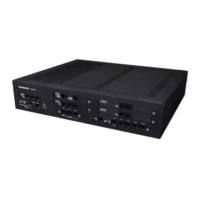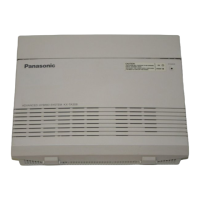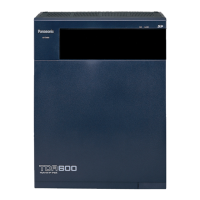4.1.1 SIP (Session Initiation Protocol) Trunk .........................................................................336
4.1.2 Integrated Services Digital Network
(ISDN) Service Features .....................................338
4.1.2.1 Integrated Services Digital Network (ISDN)—SUMMARY ........................................338
4.1.2.2 Calling/Connected Line Identification Presentation (CLIP/COLP) .............................342
4.1.2.3 Advice of Charge (AOC) ............................................................................................345
4.1.2.4 Call Forwarding (CF)—by ISDN (P-MP) ....................................................................346
4.1.2.5 Call Forwarding (CF)—by ISDN (P-P) .......................................................................348
4.1.2.6 Call Hold (HOLD)—by ISDN ......................................................................................350
4.1.2.7 Call Transfer (CT)—by ISDN .....................................................................................351
4.1.2.8 Three-party Conference (3PTY)—by ISDN ...............................................................352
4.1.2.9 Malicious Call Identification (MCID) ...........................................................................353
4.1.2.10 Completion of Calls to Busy Subscriber (CCBS) .......................................................354
4.1.2.11 ISDN Service Access by Keypad Protocol ................................................................355
4.2 One-look Networking ....................................................................................................356
4.2.1 One-look Networking Overview ....................................................................................356
4.2.2 Network Type Comparison ...........................................................................................361
4.2.3 One-look Networking Survivability ................................................................................363
4.2.3.1 Backup Master Mode and Isolated Mode ..................................................................364
4.2.3.2 Automatic Rerouting to Secondary PBX ....................................................................368
4.2.3.3 UM Group Failover ....................................................................................................371
4.3 Private Network Features .............................................................................................372
4.3.1 TIE Line Service ...........................................................................................................372
4.3.1.1 Making a TIE Line Call ..............................................................................................373
4.3.1.2 TIE Line and Trunk Connection .................................................................................375
4.3.1.3 TIE Line Programming ...............................................................................................388
4.3.1.4 Common Extension Numbering for 2 PBXs ..............................................................397
4.3.2 Voice over Internet Protocol (VoIP) Network ................................................................398
4.3.2.1 Gateway Groups ........................................................................................................402
4.3.2.2 Common Extension Numbering for Multiple PBXs ....................................................403
4.3.2.3 Call Distribution Port Group .......................................................................................404
4.3.3 ISDN Virtual Private Network (ISDN-VPN) ...................................................................406
4.3.4 QSIG Standard Features ..............................................................................................408
4.3.4.1 QSIG Standard Features—SUMMARY .....................................................................408
4.3.4.2 Calling/Connected Line Identification Presentation (CLIP/COLP) and Calling/Connected
Name Identification Presentation (CNIP/CONP)—by QSIG ......................................410
4.3.4.3 Call Forwarding (CF)—by QSIG ................................................................................412
4.3.4.4 Call Transfer (CT)—by QSIG ....................................................................................414
4.3.4.5 Completion of Calls to Busy Subscriber (CCBS)—by QSIG .....................................416
4.3.5 QSIG Enhanced Features ............................................................................................417
4.3.5.1 Network Direct Station Selection (NDSS) ..................................................................420
4.3.5.2 Centralised Voice Mail ...............................................................................................425
4.3.6 Network ICD Group ......................................................................................................430
4.3.6.1 PS Roaming by Network ICD Group .........................................................................432
5 System Configuration and Administration Features ........................435
5.1 System Configuration—System ..................................................................................436
5.1.1 Class of Service (COS) ................................................................................................436
5.1.2 Group ...........................................................................................................................438
5.1.3 Tenant Service .............................................................................................................443
5.1.4 Time Service ................................................................................................................447
5.1.5 Operator Features ........................................................................................................451
5.1.6 Manager Features ........................................................................................................452
5.2 System Configuration—Extensions ............................................................................454
5.2.1 IP Proprietary Telephone (IP-PT) .................................................................................454
5.2.2 SIP (Session Initiation Protocol) Extension ..................................................................456
12 Feature Guide
Table of Contents

